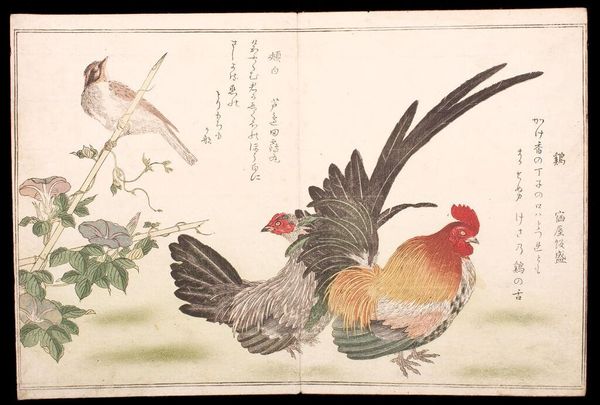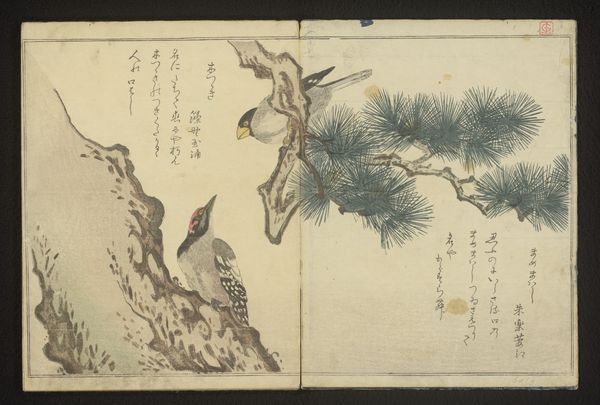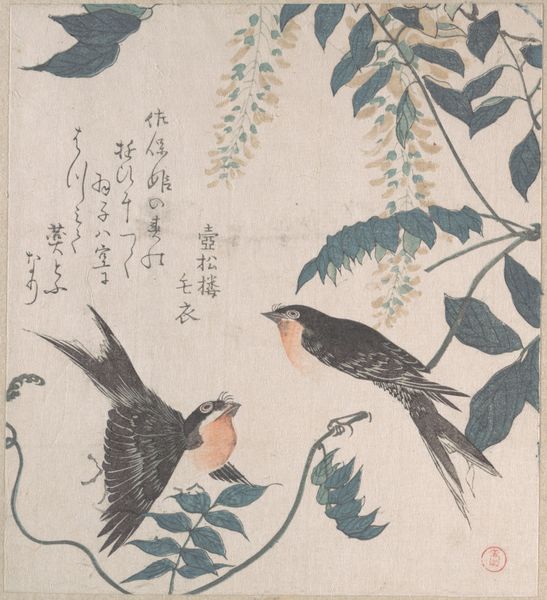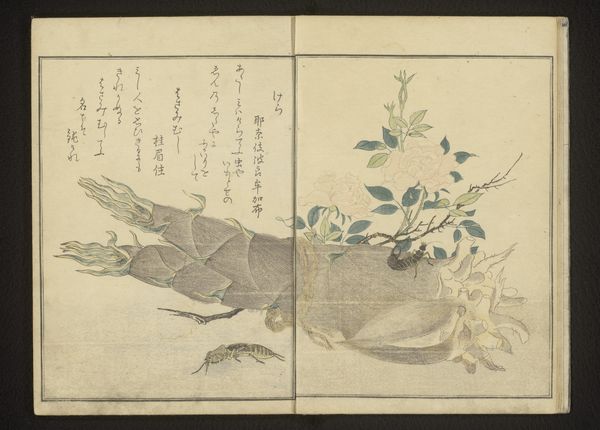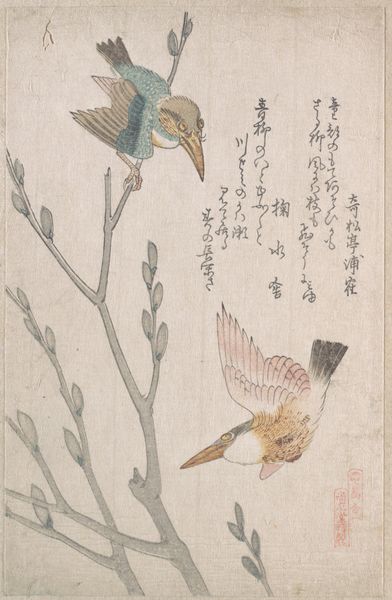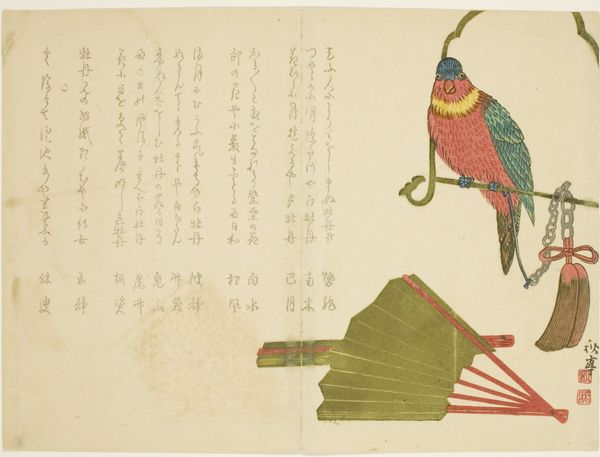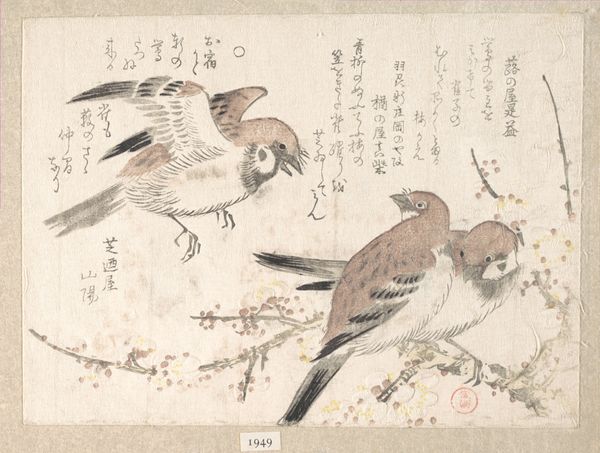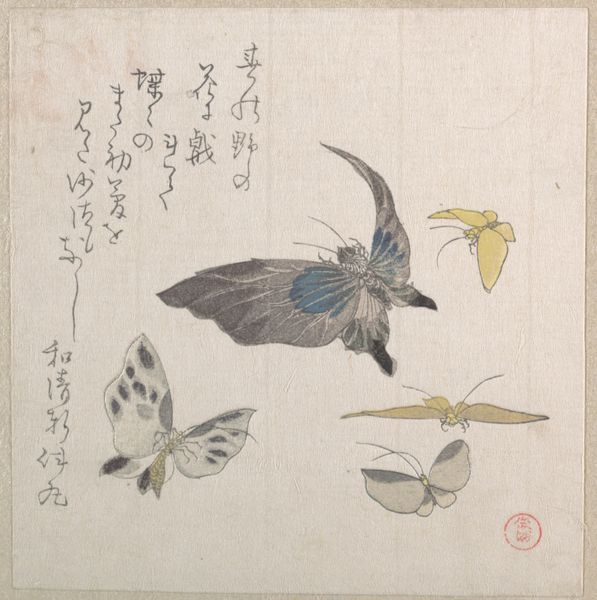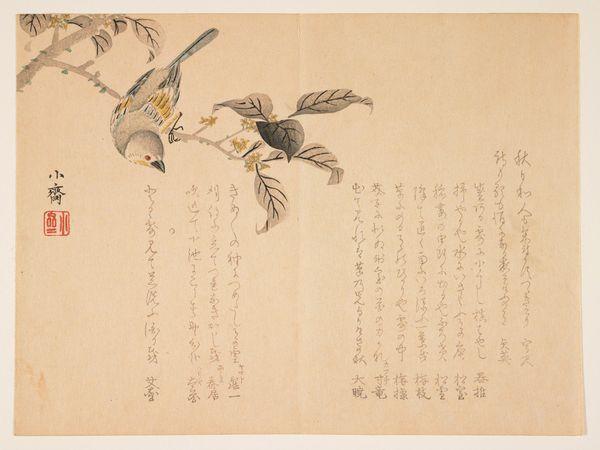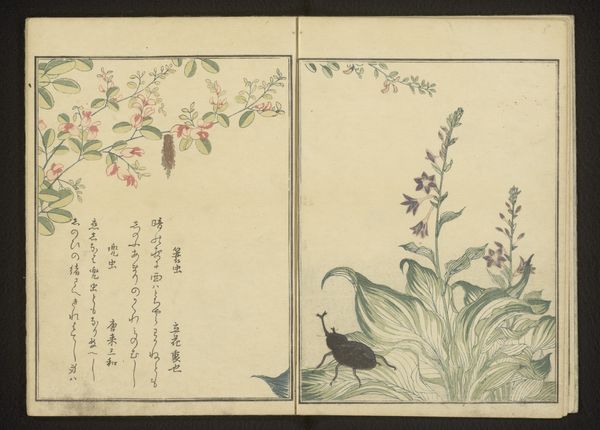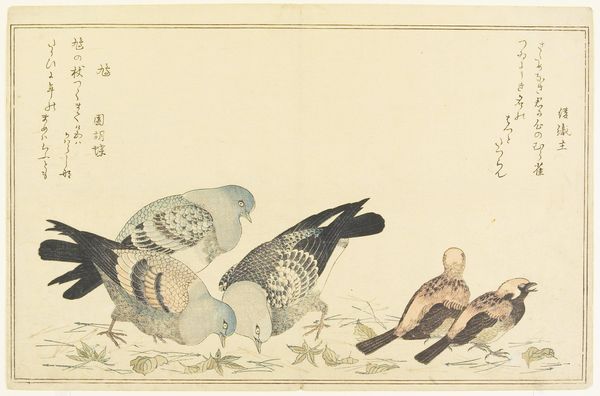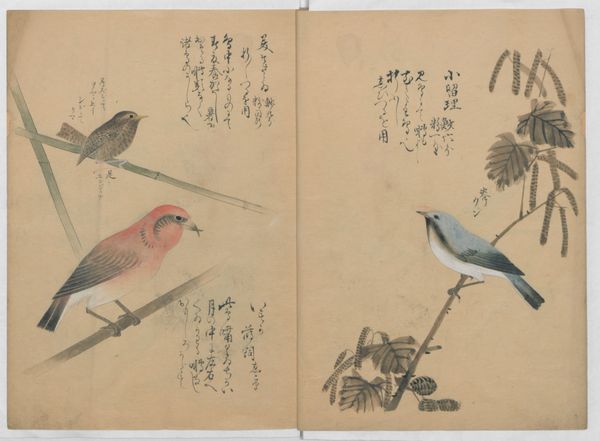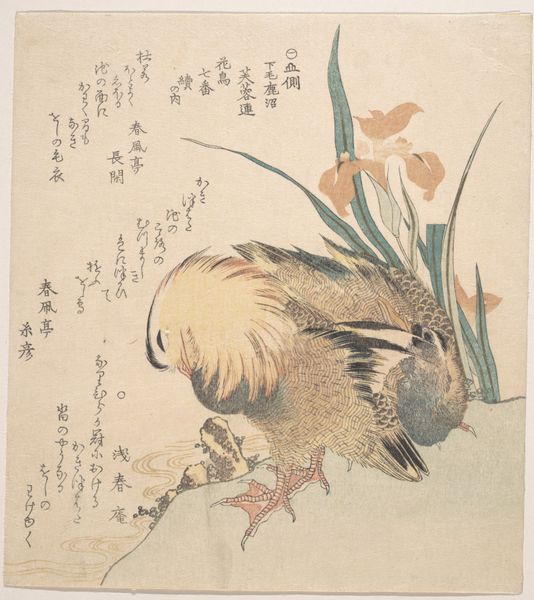
painting, print, woodblock-print
#
portrait
#
painting
# print
#
asian-art
#
ukiyo-e
#
woodblock-print
#
orientalism
Dimensions: height 251 mm, width 187 mm
Copyright: Rijks Museum: Open Domain
Editor: We are looking at "Cock and Bunting" by Kitagawa Utamaro, created around 1796. It’s a beautiful woodblock print, and what strikes me first is the arrangement. You have two chickens, one quite dominant, along with a little bird and some morning glories. It's charming, but there's almost too much happening at once! What is your take on this? Curator: Well, Ukiyo-e prints like these gained popularity in Japan’s Edo period, thanks to a burgeoning merchant class who suddenly had the means to engage with culture. Woodblock prints became a vital, almost democratic art form. Now, how do you think an image like this functioned within that specific social context? Was it just pretty decor? Editor: Hmm, I hadn’t thought about it that way. Maybe it was about aspirational living? People surrounded by beautiful, natural imagery in their homes? Curator: Precisely! Think about the specific imagery. Chickens were common, everyday animals, but rendered with such care. The juxtaposition with the poem in the upper-left is not coincidental either, and lends itself to appreciation from educated audiences in social and commercial environments. Ukiyo-e weren't simply objects of art. Editor: It’s incredible to think about how the rise of a particular class shaped the art being produced and consumed. Did the cultural significance influence how artists composed the images, like the busyness I noticed? Curator: Absolutely! Ukiyo-e artists walked a fine line, responding to commercial tastes while establishing their brands, so to speak, but within constraints imposed by publishers and the ever-present authorities. We might consider then that seeming "busyness" to be about visibility and market penetration. Editor: So, the seemingly chaotic composition is not just random, but almost a strategy! That's fascinating; it completely reshapes how I view the piece. I appreciate the added layers of context on how it reflects consumerism, historical constraints, and democratization of art during that period. Curator: Indeed, it goes to show how the art world is itself a vibrant stage for social interplay.
Comments
No comments
Be the first to comment and join the conversation on the ultimate creative platform.
